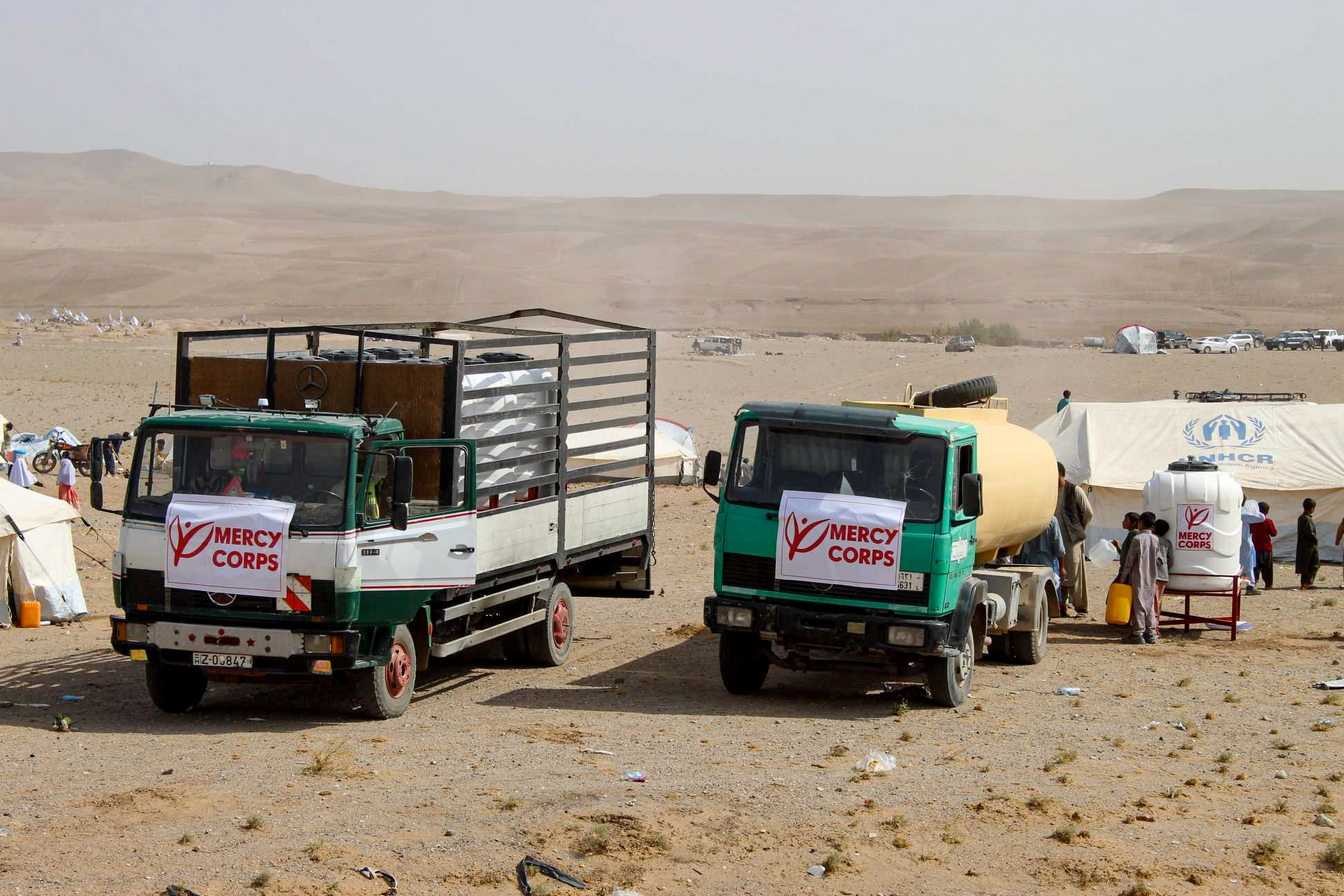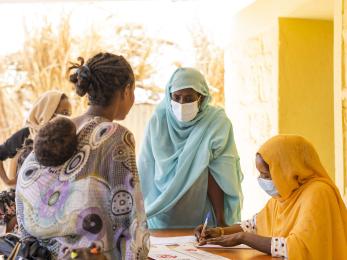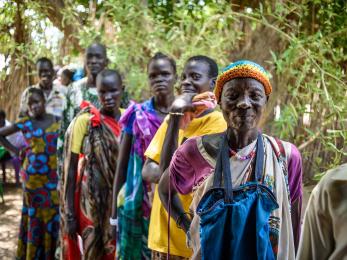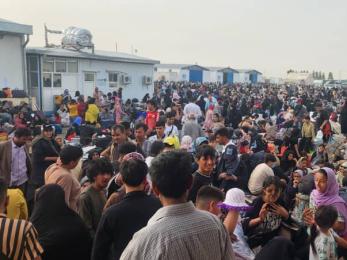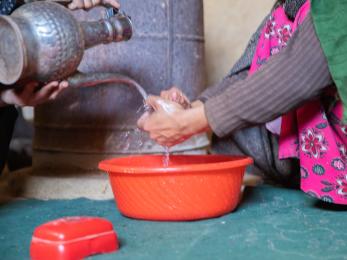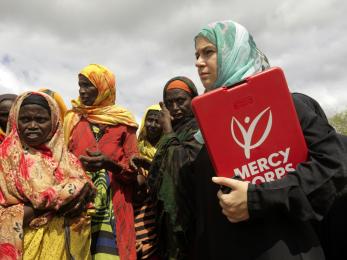Breadcrumb
Afghanistan
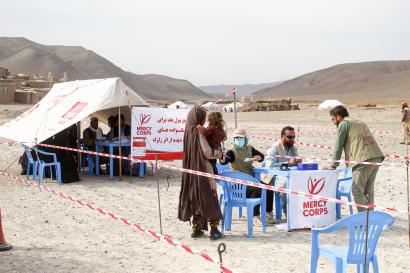
Mercy Corps has been partnering with Afghan communities since 1986, helping communities grow stronger and more resilient. In 2024, our programs reached over 152,000 people across the country.
The context
Decades of conflict and instability, economic insecurity, and environmental degradation have led to a protracted humanitarian crisis in Afghanistan, with approximately 23 million individuals in need of assistance in 2025. The challenges in Afghanistan are marked by widespread food insecurity, limited access to basic services, increasing exposure to climate disasters, and policies that restrict access to employment and education opportunities for women and girls.
Since 2022, climate disasters have been the main driver of displacement in Afghanistan. Each year, 250,000 people are hit by sudden disasters, with droughts and floods—made worse by climate change—threatening livelihoods, food, and water security.
In 2025 alone, approximately 2.5 million Afghans returned from neighboring countries like Iran and Pakistan, according to the UN. Half of returnees rely on unsustainable income sources. An estimated 14.8 million Afghans are food insecure, with 3 million children and 1 million pregnant women and new mothers being acutely malnourished. 67% of households report difficulties in accessing water in 2024. These cascading challenges have exacerbated humanitarian needs for millions of Afghans.
Our impact
Through partnerships with local governments and organizations, Mercy Corps supports communities as they build economic stability, particularly during recovery in the aftermath of emergencies. Our programs make an impact across these areas:
Supporting sustainable livelihood opportunities
Through a multi-faceted approach, Mercy Corps provided agriculture and livestock support in addition to delivering cash aid to help meet basic needs so that participants could focus on growing their businesses. Farmers received trainings for agricultural best practices and supplies like seeds, animal feed, and livestock medicine. Our teams helped people build stronger business skills and connections, boosting productivity and keeping their businesses going. Almost 120,000 participants, from regions affected by conflict, increased their income and food security.
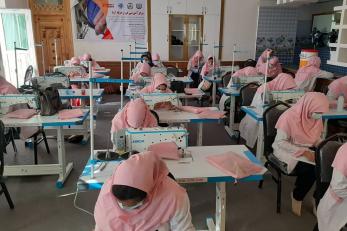
Mercy Corps’ livelihood programs help Afghans build sustainable livelihoods by offering practical, in-demand vocational skills that open doors to real economic opportunities. Our programs have supported 35,000 participants (36% women) to graduate with certifications across 38 different skills, like tailoring, carpet weaving, mobile phone repair, digital marketing, and more—with 74% of them remaining in employment three years after graduation.
Creating pathways to lasting food security
Mercy Corps is helping communities build lasting food security through locally driven, sustainable solutions. Reaching more than half a million people, our programs support farmers with practical ways to adapt to changing conditions, like using water-efficient irrigation, diversifying crops, and protecting soil health. Farmers also receive small grants and access to microfinance to invest in the tools and supplies they need. Each effort places special focus on vulnerable households, especially those led by women, to ensure everyone has an equal chance to grow and thrive.
Our teams are strengthening food security by connecting farmers to the resources and markets they need to keep their livelihoods thriving. By partnering with agribusinesses, cooperatives, and private sector organizations, Mercy Corps helps farmers access quality seeds, tools, and buyers so they can grow more, earn fair prices, and keep food flowing to their communities. In areas recovering from conflict, programs support returnee and host communities in rebuilding their agricultural livelihoods through community-led planning. Together, these efforts build stronger food systems that can withstand shocks and sustain families for the long term.
Increasing access to clean water through reliable networks
Mercy Corps has rehabilitated and built numerous water networks to ensure that communities are able to meet their household and agriculture water needs. In 2024, our teams expanded access to clean water by building or restoring 18 water networks and installing 69 hand-pump wells across 26 communities in four districts. These projects now provide safe drinking water to more than 37,000 people.
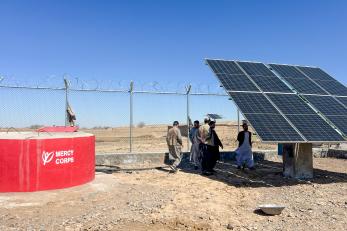
In Herat province, Mercy Corps restored a vital water network and built a new solar-powered dug well, providing residents with a steady source of clean drinking water. In an area where groundwater is often exposed and shared with animals while also being too salty to use, this new system now delivers safe water to around 1,750 people—meeting a critical need and ensuring the community has a reliable supply for years to come.
Our water programs put communities at the center—ensuring each solution is built to last and meets local needs. For every water network built or restored, Mercy Corps helped form and train a local Water User Committee to manage and maintain the system. By working closely with residents, the team also identified and trained a local technician to keep the system running, strengthening both community ownership and long-term reliability.
Delivering urgent support during emergencies
Following prolonged conflict, millions of Afghans fled the country to escape violence and economic collapse. With many now returning home, Mercy Corps has responded by launching emergency operations at border points in Kandahar and Herat—the two provinces bordering Pakistan and Iran—to meet urgent food and water needs.
Mercy Corps was among the first to respond at the Inzargai Temporary Reception Center in Kandahar, where it became the lead agency providing access to clean water and coordinating efforts. More than 60,000 returnees gained access to safe drinking water, sanitation, and hygiene practices. In Herat, Mercy Corps delivered lifesaving assistance including providing emergency water and cash assistance to buy food to over 14,000 households, approximately 100,000 individuals. Improved access to sanitation facilities and safe drinking water help to reduce health risks for 96,000 people.
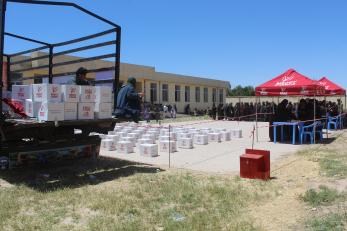
During emergencies, our team delivers critical access to water by building temporary water points and repairing damaged water networks to support recovery. Following the four major earthquakes in 2023, over 4,000 people received access to safe water. Our teams delivered cash aid so people could buy food and supplies for their families, as well as livestock assistance including providing provisions like animal feed, straw, and dewormer, reaching 21,700 communities across three districts.
